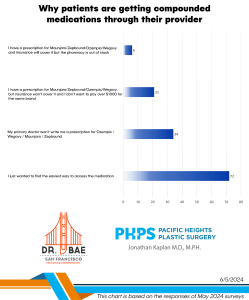 There’s a lot of talk about saline and silicone implants–but do you know what the real differences between them are, or why some patients and doctors prefer one over the other? Here’s the story:
There’s a lot of talk about saline and silicone implants–but do you know what the real differences between them are, or why some patients and doctors prefer one over the other? Here’s the story:
Saline Implants
Saline implants are silicone shells that are filled with sterile salt water after they’ve been placed in or behind the breasts.
One reason that some women prefer saline implants is the fact that the substance inside is known to be harmless; in fact, if an implant leaks or breaks and the saline is released into the body, the body simply absorbs it (though the silicone shell itself does have to be removed surgically in these cases). Another advantage of saline implants is the fact that, since they’re only filled after they’re inside the body, the incisions required for their placement can be very small and are generally easily hidden.
Finally, some women prefer saline implants because studies have shown that capsular contracture—a complication that causes the tissue around an implant to tighten and squeeze the implant, making the breast feel hard to the touch and distorting its appearance—is more likely to occur with silicone implants.
Silicone Implants
Silicone implants are silicone shells that are pre-filled with a thick, sticky, silicone gel.
Women tend to choose silicone implants for their more natural feel (most will argue that the gel mimics the fat of the breast better than saline does), and because they are less likely than saline implants to fold or ripple. Silicone implants also tend to be harder to detect by touch because their edges are less pronounced than those of saline implants; women who start out with small breasts or who do not want their implants placed beneath the chest muscles often prefer silicone implants for this reason.
One thing to keep in mind about silicone implants is the fact that when they rupture, the gel that leaks out is not absorbed into the body as saline would be; instead, it stays where it is in the breast. The FDA has not found silicone gel to be harmful to women’s health, but if a leak occurs, the gel has to be removed. It’s not always obvious when a silicone implant breaks, so it’s recommended that women who have them get an MRI three years after their breast augmentation, and then once every two years after that. Some women like that silicone implants won’t deflate the way saline implants will; others, however, don’t like the idea that their implants could leak without them knowing it.
Conclusion
Saline and silicone implants obviously both have their advantages; between the two, there’s really no clear winner. Discuss your options with your plastic surgeon and choose the implant type that feels right to you, but don’t let the decision-making process keep you up at night: saline or silicone, with an experienced, board-certified plastic surgeon performing the procedure, you’ll be happy with your results.




